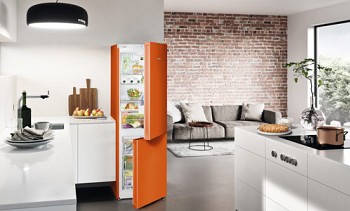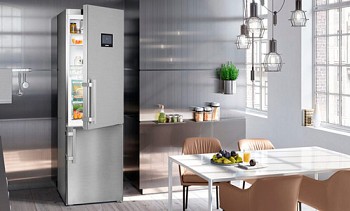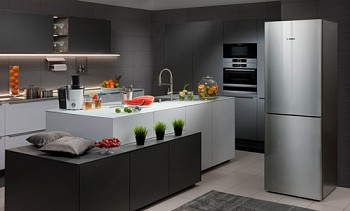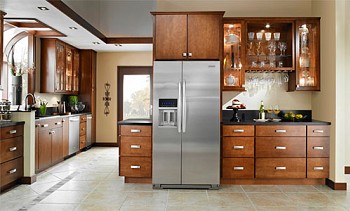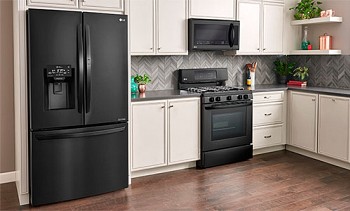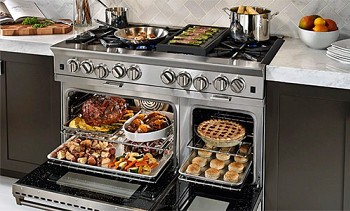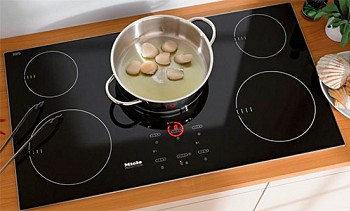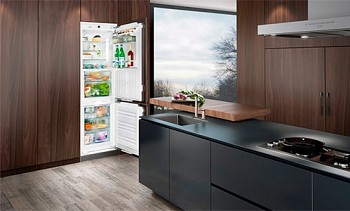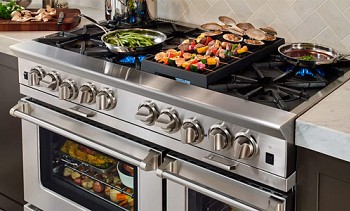The principle of operation and the device of a household refrigerator
As a result of reading this article, you will receive comprehensive information regarding the principle of operation of the refrigerator and the elements of which it consists.
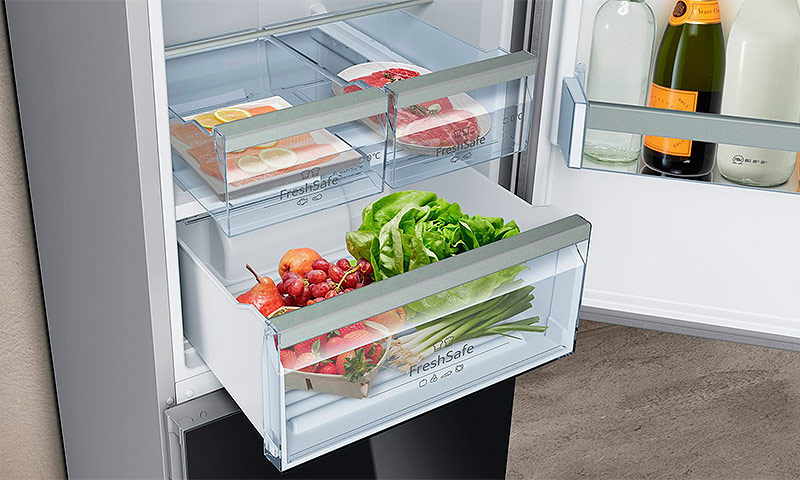
Content:
Compressor-type refrigerator
The most popular refrigerators for use in everyday life are compressor-type refrigerators. Typically, such a device for cooling food is made in the form of an isothermal cabinet in which electrical equipment is located.
Compressor-type models consist of the following elements
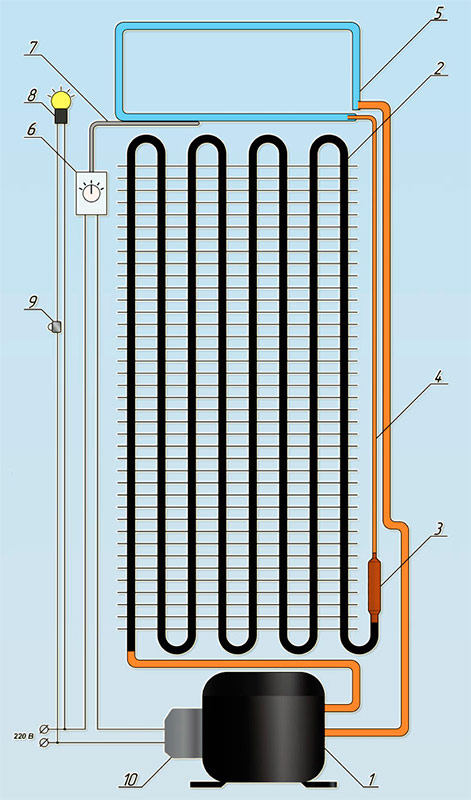
1. Motor compressor.
2. Capacitor.
3. Filter drier.
4. Capillary tube.
5. Evaporator.
6. Thermostat.
7. Temperature sensor.
8. Lighting lamp for the refrigerator compartment.
9. Lighting button.
10. Start protection relay.
Housing
The material from which the supporting structure is made must have increased rigidity. If sheet steel is used in the production, its thickness is usually 0.6-1 mm. However, at present, more and more preference is given to impact-resistant plastic, which makes it possible to minimize the consumption of expensive metal. At the same time, such a refrigerator weighs much less.
Door
The outer and inner panels overlapping the opening are a single structure, inside of which there is a heat-insulating material. The door is held in the closed position due to magnetic shutters, which at one time replaced the mechanical parts of the trigger type.
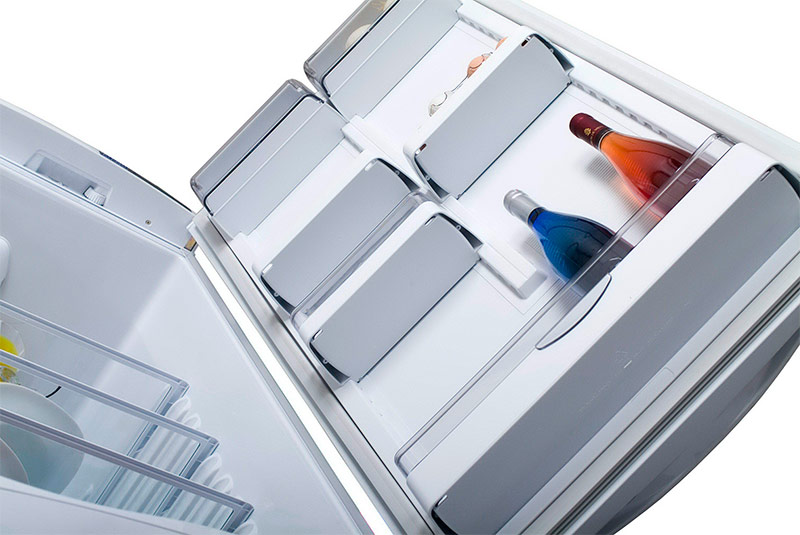
Door seals
The necessary tightness is ensured by a perimeter sealing profile located on the inner panel. A magnetic element is mounted in it, which is responsible in the device of the refrigerator for the snug fit of the door to the surface of the case.
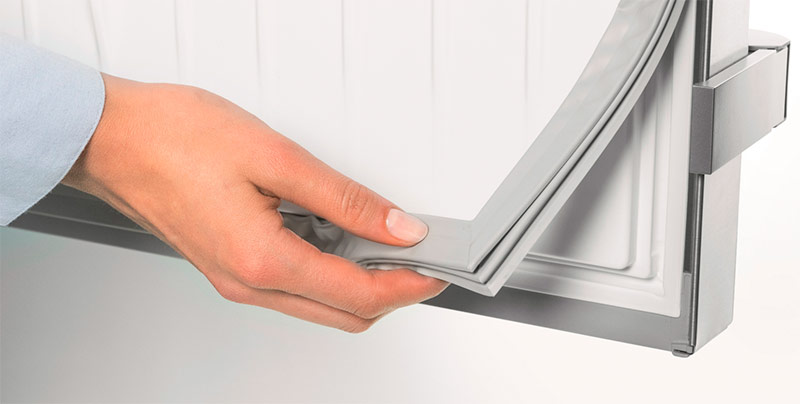
Seal the refrigerator door.
As a raw material for the manufacture of magnetic tape, barium is used in combination with various resins, allowing to achieve the required elasticity. At the moment of pressing, the profile of the seal is stretched. At the same time, the door opens easily enough, requiring minimal effort.
Internal shelves and cabinets
Inside the refrigerator there are cabinets that can be made both of sheet steel, on which white silicate-titanium paint is applied, and of shockproof plastic.
The material used for plastic chambers with removable shelves is able to withstand mechanical stress and is absolutely resistant to freon. In addition, elements made of ABS plastic are excellent for decorating surfaces.
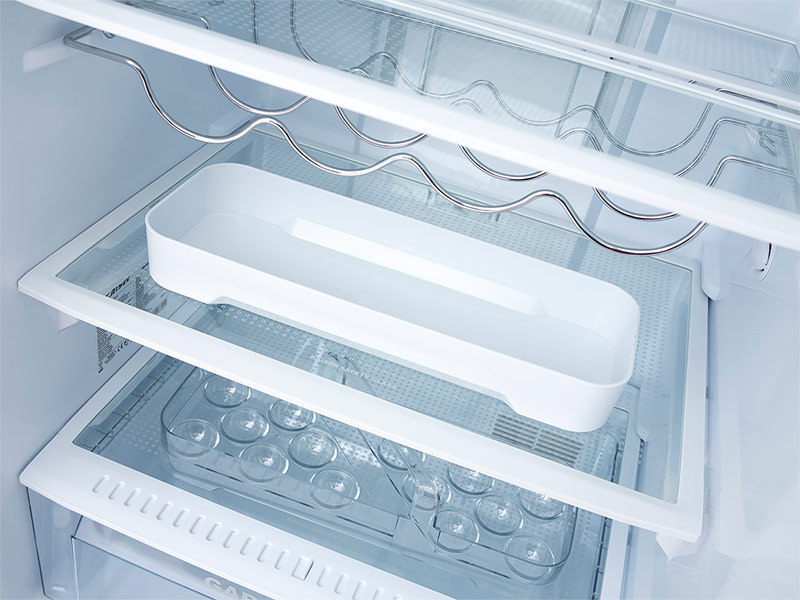
As for the low-temperature compartments of the refrigeration unit, in particular the freezer, aluminum or stainless steel is used to equip them. At the same time, steel chambers are considered not only more durable, but also meet hygiene requirements. However, due to their weight, the total mass of equipment increases significantly.
The advantages of plastic elements, in turn, lie in the low coefficient of thermal conductivity, as well as the moderate weight of the products. A significant minus is their fragility. Such cameras quickly lose their original appearance. In terms of strength, they are significantly inferior to internal parts made of steel.
Motor compressor
The main element of a compression type refrigeration unit is usually located in the lower rear of the appliance.The compressor is driven by the operation of an electric motor, resulting in the creation of the necessary pressure on a particular section of the system.
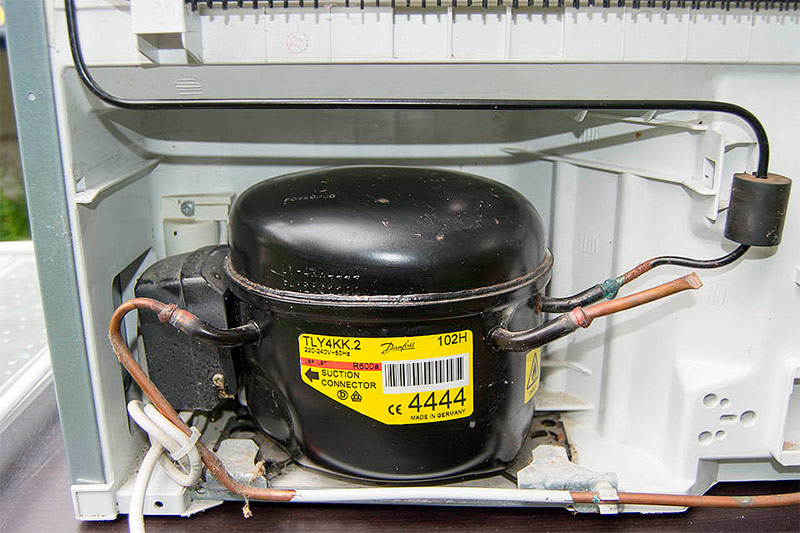
Refrigerator motor compressor.
This happens due to the movement of the refrigerant as the refrigerator works. Thus, excess heat is transferred from the inner chamber to the outside. Modern models of domestic refrigerators can be equipped with either one or two compressors.
Capacitor
This part is usually in the form of a coil, and is designed to convert freon from a gaseous state to a liquid one. As a result of this process, thermal energy is transferred to the environment. For more efficient removal of excess heat, the metal tube is attached to the ribbed surface.
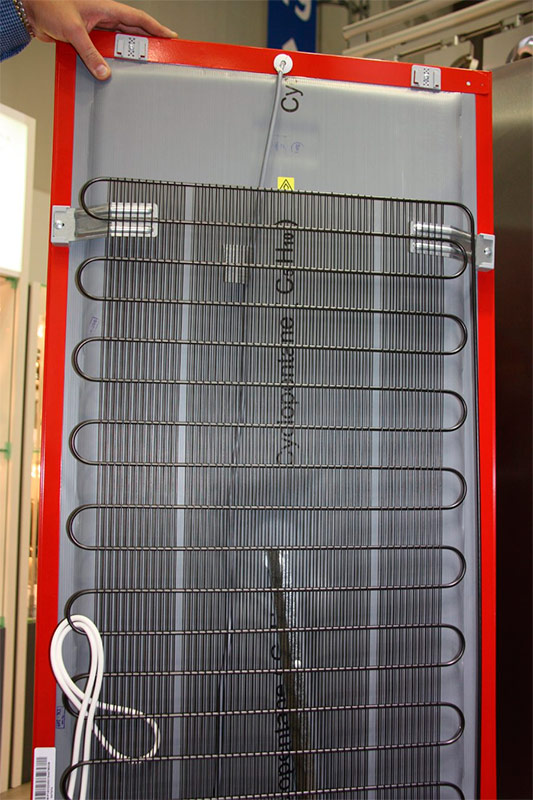
Condenser refrigerator.
The refrigerant entering it cools down, reaching room temperature, after which the liquid moves in the direction of the capillary. Heat removal from the condenser in most modern models of refrigerators is carried out by convection.
Capillary
The refrigerant moving towards the evaporator passes through a narrow tube, as a result of which its pressure decreases. As a result, at a certain stage, freon reaches the boiling point, after which the process of its evaporation takes place.
Evaporator
This element acts on the principle of the opposite of the condenser - that is, the liquid refrigerant is converted into gas and begins to absorb thermal energy, releasing cold. Thus, there is a decrease in air temperature inside the chamber, as a result of which the products contained in it are also cooled.
This part is made in the form of a tube that connects to a metal plate. The evaporator can be located directly in the chamber and be combined with its body. In other cases, it is built into the wall of the refrigerator.
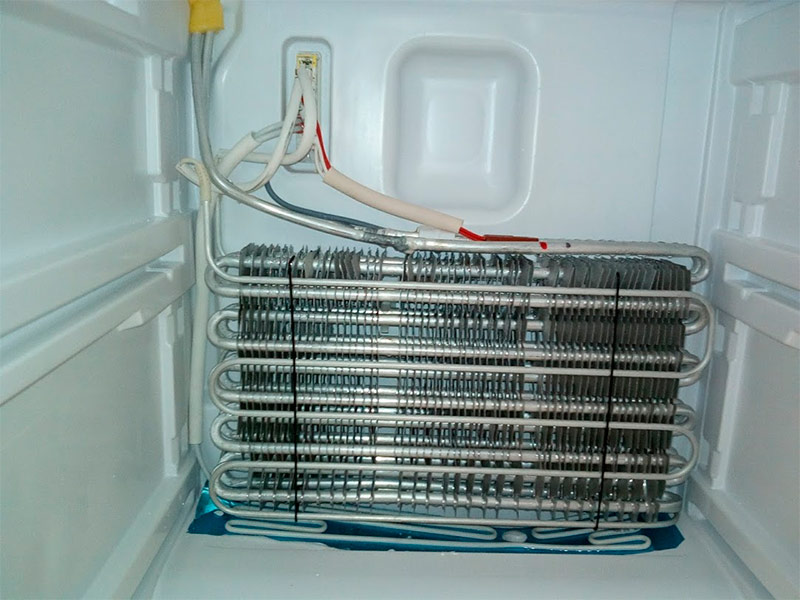
Refrigerator evaporator.
Filter drier
Traditionally, a copper tube is used in the compressor type refrigerator operating scheme, installed directly in or near the condenser, and responsible for cleaning the refrigerant from all kinds of contaminants that form during the operation of the device.
This helps to prevent clogging of the capillary, as a result of which the fluid passing through it when it collides with an obstacle may freeze.
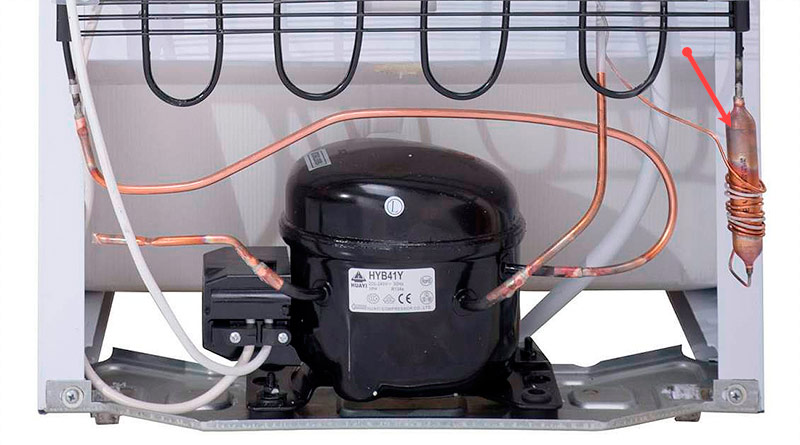
Filter drier.
Dokipatel
On the section of the system between the evaporator and the compressor there is a special container made of aluminum or copper. It is necessary for forced boiling of freon, part of which as a result of insufficient evaporation could remain in a liquid state. Without this, it will not be possible to achieve proper compressor operation, since it is capable of pumping exclusively a gaseous product.
Moreover, the absorption of liquid, even in a small amount, can lead to its failure. In most models, the booster is located inside the device, mainly in the freezer. This is due to the fact that in the process of additional boiling of the refrigerant, thermal energy is re-absorbed.
Temperature controller
A sensor installed in the refrigerator compartment controls the temperature, which must be kept within a certain corridor. At the time of its maximum increase by means of a temperature regulator, an electrical circuit is closed, as a result of which a compressor is turned on, cooling the air inside the chamber.
As soon as the temperature drops to the set value, the circuit opens, and, accordingly, the compressor stops working.
Protective start relay
This is another element in the device of a household refrigerator, without which no such device can do. Due to the actuation of the relay, the compressor engine is started at the moment of closing the electric circuit, for which the thermostat is responsible.Also, thanks to the protective and starting device, the motor is switched off in a timely manner, which eliminates the possibility of overheating.
The principle of operation of the compressor-type refrigerator
The air temperature inside the chambers is lowered by changing the state of aggregation of the refrigerant used in the system, which continuously moves in a closed circuit.
In the process of circulation occur:
- cooling and liquefaction of the freon entering the condenser;
- expansion of the refrigerant;
- evaporation of the resulting gases;
- heating and compressing the refrigerant.
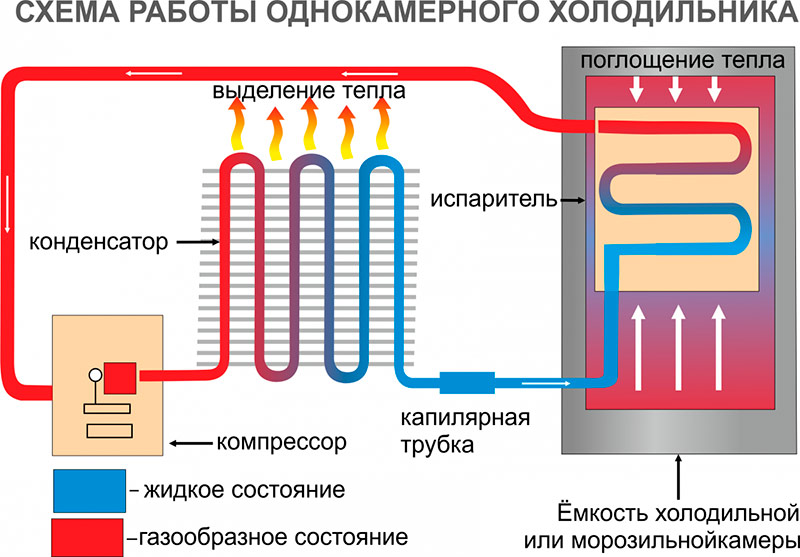
Each of these processes occurs at a certain stage. By means of a compressor, the vapors generated inside the evaporator are pumped out. Using a discharge tube, they are transferred to a condenser, after which they are cooled and converted into a liquid.
The freon purified by the filtration element is sent to the capillary, where its pressure drops to the desired level before the refrigerant enters the evaporator.
A further principle of operation of the refrigerator is to convert boiling freon into steam. Moreover, the design of the evaporator is thought out in such a way as to ensure complete evaporation of the liquid inside. At the stage of vaporization, thermal energy is absorbed, resulting in a decrease in temperature inside the refrigerator. In turn, the refrigerant is again transferred to the compressor.
This repeatable cycle can be interrupted by a temperature controller, which triggers the compressor engine to stop. After a certain period of time, the temperature rising inside the chamber will reach the permissible limit, after which the motor will be restarted by means of a thermostat.
In modern models of double-chamber refrigerators, two evaporators are installed, each of which is responsible for cooling a separate part of the structure. In this case, the refrigerant will not enter the refrigerator compartment chamber until the temperature inside the freezer reaches the required value.
Inverter compressor: features of operation and device
The engine of a conventional compressor runs periodically, then turning on at full power, then turning off again, the inverter runs constantly, but with different intensities.
As a result, the engine experiences constant increased loads that occur when it starts.
The use of an inverter installation in the refrigerator device eliminated this drawback. The main difference of such a system is the constant operation of the motor, the rotation speed of which at a certain moment decreases. Thus, the circulation of the refrigerant does not stop completely, but significantly slows down.
In this case, the temperature level inside the chamber is maintained within the specified value. This mode allows you to increase the working life of individual items of equipment, and at the same time, save on energy consumption. This parameter does not affect the other characteristics of the device.
The difference between inverter and non-inverter compressors is clearly shown in the video:
Features of the device and operation of refrigerators with the NO Frost system
The main disadvantage of ordinary household refrigerators is the regular freezing of moisture, which enters the chamber and remains on the walls of the evaporator. As a result, the formed frost prevents the cooling of the air inside the chamber. The normal cooling process is disrupted.
Freon continues to circulate in the system, but its ability to absorb thermal energy is reduced.
When a thick layer of snow coat appears in the freezer, the user encounters two problems at once:
1. Food inside is less chilled.
2. The compressor engine experiences an increased load, because it is forced to work continuously, since the thermostat does not work at elevated temperatures. In this case, the details of the mechanism wear out much faster.
That is why when operating refrigerators equipped with drip evaporators, it is necessary to periodically resort to their forced defrosting.
When using the No Frost system, moisture does not freeze. Accordingly, the operation scheme of this type of refrigerator does not imply regular defrosts.
The No Frost system consists of:
- electric heater;
- built-in timer design;
- a fan that promotes heat absorption;
- special tubes through which melt water is discharged.
The evaporator located in the freezer is a rather compact radiator that can be installed almost anywhere. For more efficient absorption of the thermal energy generated inside the freezer, a fan is used.
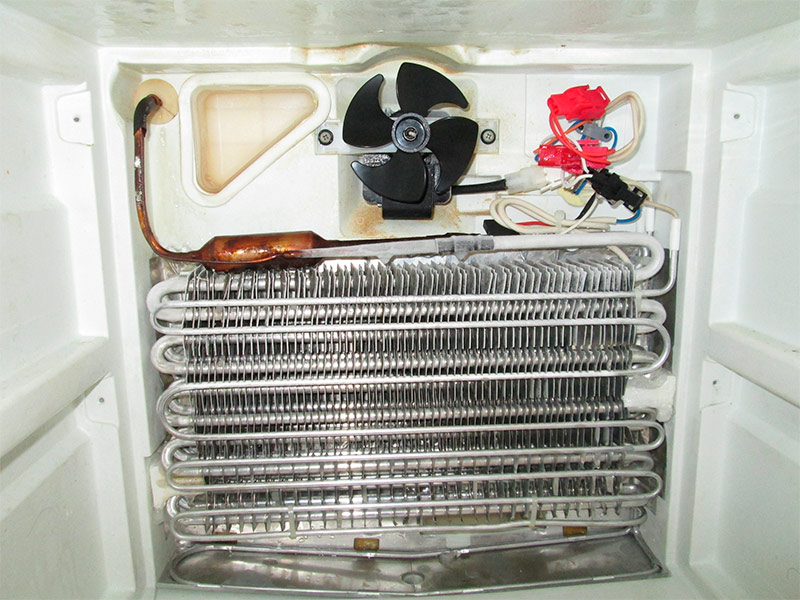
System fan No Frost.
Located directly behind the evaporator, it provides a constant movement of air in the required direction. Thus, foodstuffs are constantly exposed to air flow, which makes them perfectly cooled.
At the same time, condensate builds up on the walls of the evaporator, resulting in the formation of frost. However, due to the timer that the No Frost system is equipped with, at some point the heater starts and the defrosting process takes place.
When the heating element is on, the layer of the snow coat is noticeably reduced, and the thawed water moves through the tubes, filling the tray located outside the refrigerator compartment. Subsequently, natural evaporation of moisture occurs, which enters the room air.
Advantageously, a domestic refrigerator device implies a No Frost system exclusively for a freezer.
But there are also modern models in which it is installed, including in the refrigerator.
Such devices are much less in need of systematic care. The only inconvenience associated with their operation, can be considered quite quick drying of food in the chamber.
This is due both to the continuous circulation of air in the system, and to the almost ongoing process of removing excess moisture.

Features of the device and operation of refrigerators with a "crying" evaporator system
You can get rid of excess moisture accumulating inside the camera, not only with the No Frost system. A fairly simple, but no less effective design called the “crying” evaporator is currently installed even in budget models of household refrigerators. At the same time, it is much more economical in comparison with the above system.
In this case, the evaporator is hidden under the rear wall of the chamber. When the compressor is turned on, the cooling process starts, as a result of which condensation appears on it, forming a layer of frost. However, after turning off the compressor, the wall begins to heat up. Accordingly, hoarfrost gradually melts.
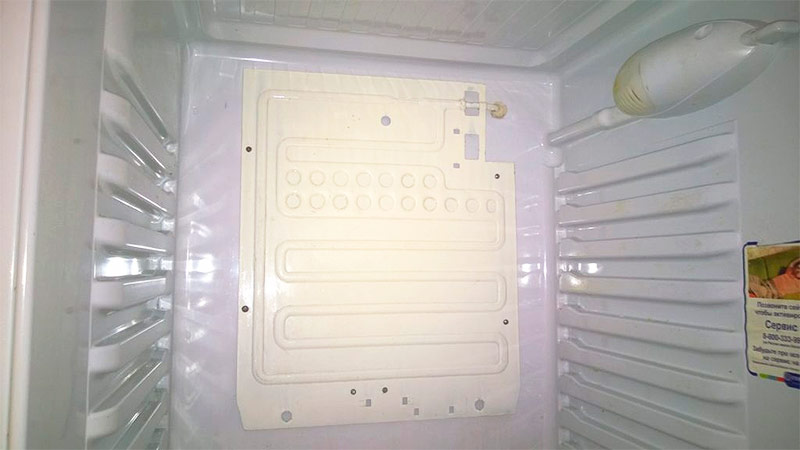
Condenser open type drip defrosting system of the refrigerator. In most models, the capacitor is hidden behind a plastic wall.
This system owes its name to the method of draining the thawed water, which moves droplets along the wall, falling through the drainage hole into the hose. The same, in turn, is connected to a container, which, as a rule, is attached to the compressor housing.
How to choose a screwdriver - selection criteria and characteristics + Video
Reviews about air conditioners Supra - experience and recommendations for their use
Reviews of entrance doors, rating, which entrance metal doors are better
Which refrigerator is better: drip or Nou Frost - a detailed comparison

